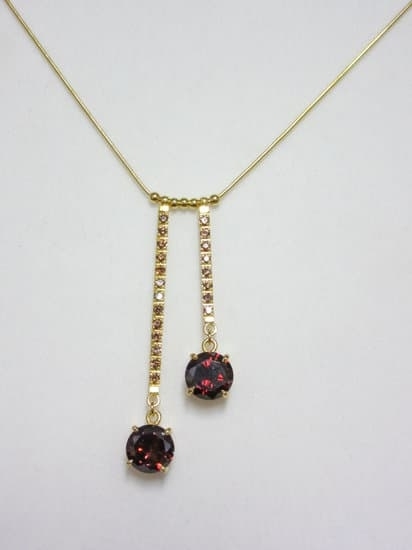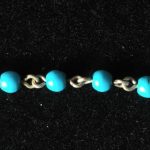The history of jewelry hardware is a fascinating and integral part of the story of fashion and accessories. From ancient origins to contemporary trends, jewelry hardware has played a significant role in the evolution of style and cultural expression. In this article, we will delve into the rich history of jewelry hardware, exploring its origins, symbolism, and influence on global trade and fashion.
Throughout history, jewelry hardware has not only served as a decorative element but also as a cultural signifier. The earliest forms of jewelry hardware unearthed from archaeological sites reveal the importance of adornment in ancient societies and the symbolic meanings attached to different materials and designs. By examining these ancient origins, we can gain valuable insights into the cultural implications and significance of jewelry hardware.
Over time, the styles and designs of jewelry hardware have evolved across different time periods and regions, reflecting shifts in artistic movements, societal values, and technological advancements. From traditional craftsmanship to modern techniques, the materials and methods used in crafting jewelry hardware have also undergone significant changes. Understanding these developments allows us to appreciate the craftsmanship behind these intricate pieces and their enduring appeal.
Ancient Origins
Early Civilizations
The history of jewelry hardware dates back to the earliest known civilizations, where metalworking and adornment were essential parts of cultural and religious practices. In ancient Mesopotamia, for example, jewelry hardware such as clasps, pins, and buckles were crafted from materials like gold, silver, and precious stones. These pieces not only served a functional purpose in fastening garments or securing items, but they also held symbolic significance in religious ceremonies and as markers of social status.
Cultural Significance
Across different ancient cultures, jewelry hardware held diverse cultural meanings. In Ancient Egypt, amulets and pendants with intricate hardware designs were believed to offer protection and bring good fortune to the wearer. In China, decorative hairpins and hair accessories were adorned with elaborate metalwork as symbols of beauty and femininity. Understanding the cultural implications of early jewelry hardware provides valuable insights into the beliefs, values, and societal structures of these ancient civilizations.
Archaeological Discoveries
Archaeological excavations have unearthed a wealth of artifacts that shed light on the evolution of jewelry hardware in various ancient societies. From intricately designed Roman fibulae to Viking brooches adorned with filigree work, these discoveries offer a glimpse into the craftsmanship and artistic sensibilities of past civilizations. The study of these artifacts not only helps historians trace the development of jewelry hardware over time but also contributes to our understanding of trade networks and cultural exchanges in ancient history.
Evolution of Styles
The history of jewelry hardware is a rich tapestry that reflects the changing styles and tastes of different cultures across the globe. From the ancient civilizations to the modern era, jewelry hardware has evolved in design and function, influenced by various factors such as social status, technological advancements, and artistic movements. This section will delve into the fascinating journey of jewelry hardware, tracing its development across different time periods and regions.
Ancient Civilizations
In ancient times, jewelry hardware served not only as adornment but also as symbols of identity, wealth, and religious beliefs. The Egyptians, for example, crafted intricate jewelry pieces adorned with precious gemstones and symbolic motifs such as the Ankh and Scarab beetle. Meanwhile, in ancient Greece and Rome, jewelry hardware took on a more classical aesthetic with designs inspired by mythology and nature.
Medieval and Renaissance Period
During the Middle Ages and Renaissance period in Europe, jewelry hardware reflected the opulence and grandeur of the aristocracy. Intricately designed brooches, clasps, and buckles were adorned with ornate filigree work and elaborate engravings. The use of precious metals such as gold and silver further emphasized the luxurious appeal of these pieces.
19th Century Industrial Revolution
The advent of the Industrial Revolution brought about significant changes in jewelry hardware design. Mass production techniques allowed for more accessible designs that catered to a growing middle-class market. With innovations in metalworking machinery, intricate details like etching and embossing became more affordable to produce.
Throughout history, jewelry hardware has been a reflection of cultural dynamics, technological advancements, and artistic influences. As we trace its evolution across different time periods and regions, it becomes evident that this seemingly small component of accessories has played a significant role in shaping fashion trends and personal adornment practices around the world.
Materials and Techniques
Throughout history, the crafting of jewelry hardware has been a significant aspect of the jewelry-making process. This section will delve into the traditional and modern methods used in creating jewelry hardware, as well as the materials utilized to produce these intricate pieces.
Materials used in crafting jewelry hardware have evolved over time, from ancient materials such as shells, bone, and wood to more modern materials like precious metals and gemstones. Here are some commonly used materials:
- Precious Metals: Gold, silver, and platinum have been prized for centuries and continue to be popular choices for crafting jewelry hardware due to their durability and luster.
- Gemstones: From diamonds to rubies and emeralds, gemstones are often incorporated into jewelry hardware to add color and brilliance.
- Enamel: Used for decorative purposes, enamel is applied to metal surfaces through a high-temperature firing process.
In terms of techniques used in crafting jewelry hardware, traditional methods like casting, soldering, and stone setting have been passed down through generations. However, modern advancements have introduced new techniques such as 3D printing and laser cutting, revolutionizing the way jewelry hardware is created. These advancements not only streamline the production process but also allow for more intricate and customizable designs.
The history of jewelry hardware is rich with innovation in both materials and techniques. As technology continues to advance, the possibilities for creating stunning and unique jewelry hardware are limitless. The fusion of traditional craftsmanship with modern methods ensures that this essential component of accessories will continue to captivate fashion enthusiasts for years to come.
Symbolism and Meaning
Jewelry hardware, including clasps, chains, and fastenings, has played a significant role in the history of fashion and accessories. Beyond their functional purposes, these elements hold symbolic significance that reflects cultural values, beliefs, and traditions.
In ancient times, jewelry hardware was not only used to adorn the body but also carried symbolic meanings. For example, the use of specific materials like gold or silver could symbolize wealth and status. The designs of clasps and fastenings also often incorporated intricate patterns and motifs that held religious or spiritual significance in various cultures. Understanding the symbolism behind these elements provides valuable insight into the beliefs and ideologies of different civilizations throughout history.
Furthermore, jewelry hardware has been used to convey personal messages or sentiments. Engraved initials, symbols, or meaningful charms added to jewelry served as a form of self-expression and storytelling. These personalized touches elevated jewelry from mere accessories to cherished keepsakes that held deep emotional value for individuals.
As fashion trends evolved over time, so did the symbolism associated with jewelry hardware. Different time periods and regions have produced unique designs and styles that reflected the prevailing societal norms and values. By examining these historical pieces of jewelry hardware, we can gain a richer understanding of how symbolism has been expressed through fashion across diverse cultures and eras.
Influence of Global Trade
The history of jewelry hardware is intricately linked to the influence of global trade, as the exchange of goods and ideas between different cultures has played a significant role in shaping the development and spread of jewelry hardware across the world. From ancient trade routes to modern globalization, the movement of people, products, and knowledge has been instrumental in the evolution of jewelry hardware styles and techniques.
One of the earliest examples of global trade impacting jewelry hardware can be seen in the Silk Road, an ancient network of trade routes that connected China to the Mediterranean. This extensive trading network facilitated the exchange of not only silk and spices but also precious metals, gemstones, and intricate jewelry pieces. As a result, different cultures were exposed to new materials and artistic techniques, leading to the cross-pollination of design elements and styles in jewelry hardware.
During the Age of Exploration, European explorers traveled to distant lands in search of new trade routes and valuable commodities. This era brought about an influx of exotic gemstones and precious metals into Europe, which greatly influenced the designs and craftsmanship of jewelry hardware during the Renaissance period. The incorporation of new materials from far-off regions resulted in a fusion of cultural aesthetics and inspired innovative jewelry designs that reflected a newfound sense of global interconnectedness.
The impact of global trade on jewelry hardware continues to be relevant in today’s interconnected world. With advancements in technology and transportation, contemporary designers have access to a wide range of materials and techniques from around the globe, allowing for endless possibilities in creating unique and culturally diverse jewelry hardware pieces. As such, globalization has contributed to a rich tapestry of design influences that shape the ever-evolving landscape of modern jewelry hardware.
| Influence | Examples |
|---|---|
| Silk Road | Precious metals from China influencing Mediterranean designs |
| Age of Exploration | Exotic gemstones influencing Renaissance designs |
| Contemporary Globalization | Access to diverse materials shaping modern designs |
Revival and Reinvention
The history of jewelry hardware is punctuated by several key moments when certain styles or elements experienced a resurgence in popularity. One such instance occurred during the Renaissance period in Europe, where elaborate and ornate jewelry hardware became fashionable once again. This was a stark contrast to the simplicity and minimalism of the preceding Middle Ages, and reflected a newfound interest in art, culture, and opulence.
Another notable revival of jewelry hardware took place during the Art Nouveau movement of the late 19th century. Artists and jewelers sought to break away from the constraints of industrialization and mass production, leading to a renewed focus on craftsmanship and intricate designs. In particular, nature-inspired motifs and asymmetrical shapes became prominent features in jewelry hardware during this period.
Additionally, the 1980s witnessed a resurgence of bold and flashy jewelry hardware, characterized by oversized statement pieces and vibrant colors. This era marked a departure from the understated styles of previous decades, as people embraced exuberant fashion trends that reflected an emphasis on personal expression.
These historical moments serve as testament to the enduring appeal of jewelry hardware throughout different time periods. As fashion continues to evolve, it is evident that certain styles from the past are bound to resurface and captivate new generations with their timeless allure.
| Renaissance Period | Elaborate and Ornate Jewelry Became Fashionable Again |
|---|---|
| Art Nouveau Movement | Nature-inspired motifs became prominent features |
| 1980s Fashion Trends | Oversized statement pieces were embraced |
Contemporary Trends
Jewelry hardware has a rich and storied history that has evolved over time, influencing the world of fashion and design. In contemporary times, the significance of jewelry hardware continues to be relevant in modern fashion and design industries. Today, jewelry hardware is not just used as functional elements but also as key aesthetic components that contribute to the overall look and feel of accessories.
One of the most notable trends in contemporary jewelry hardware is the fusion of traditional craftsmanship with modern technology. This trend has led to innovative designs that incorporate both handcrafted techniques and 3D printing methods. The result is a new wave of jewelry hardware that pushes boundaries and challenges conventional ideas of what constitutes jewelry hardware.
Additionally, there has been a growing interest in sustainable and ethical practices within the fashion industry, including jewelry hardware production. This trend has led to an increased demand for responsibly sourced materials and eco-friendly manufacturing processes. As a result, many designers are incorporating recycled metals, ethically sourced gemstones, and organic materials into their jewelry hardware creations.
Furthermore, contemporary designers are embracing diversity and inclusivity in their approach to jewelry hardware. This trend is reflected in the wide range of styles, sizes, and forms of jewelry hardware available today. From statement pieces to minimalist designs, there is an emphasis on catering to a diverse range of tastes and preferences. Overall, these current trends reflect the evolving landscape of jewelry hardware in modern fashion and design industries.
Conclusion
In conclusion, the history of jewelry hardware is a rich tapestry that weaves together culture, craftsmanship, and symbolism. From its ancient origins to its contemporary trends, jewelry hardware has played a significant role in defining fashion and accessories throughout the ages.
The evolution of styles and techniques, as well as the influence of global trade, have contributed to the diversity and richness of jewelry hardware across different time periods and regions. As we reflect on its enduring legacy, it is evident that jewelry hardware continues to hold a prominent place in the world of accessories.
The significance of jewelry hardware extends beyond mere adornment; it serves as a reflection of societal values, beliefs, and traditions. The materials used and the symbolic meanings attached to different elements offer insight into the cultural contexts in which they were created. Furthermore, the revival and reinvention of jewelry hardware at various points in history demonstrate its resilience and adaptability in response to changing tastes and societal norms.
In today’s modern fashion and design industries, the influence of history can still be seen in contemporary trends. Jewelry hardware continues to inspire designers with its timeless appeal, while also pushing boundaries with innovative techniques and materials. Its impact on the world of accessories remains undeniable, as it continues to hold a lasting legacy that connects us to our past while shaping our future.
Frequently Asked Questions
What Is Jewelry Hardware Called?
Jewelry hardware, such as clasps, jump rings, and earring hooks, is collectively referred to as findings in the jewelry-making industry. Findings are essential components that help assemble and complete a piece of jewelry.
What Is the History of the Beginning of Jewelry Making?
The history of jewelry making dates back to ancient civilizations, with evidence of jewelry found in archaeological sites from Mesopotamia, Egypt, and Greece. These early jewelry pieces were made from materials like beads, shells, and bones.
What Is the Oldest Metal Jewelry?
The oldest metal jewelry discovered by archaeologists is a set of copper beads dating back to around 6,000 years ago in what is now modern-day Iraq. This find suggests that metalworking techniques for creating adornments have been practiced for millennia.

Welcome to my jewelry blog! My name is Sarah and I am the owner of this blog.
I love making jewelry and sharing my creations with others.
So whether you’re someone who loves wearing jewelry yourself or simply enjoys learning about it, be sure to check out my blog for insightful posts on everything related to this exciting topic!





